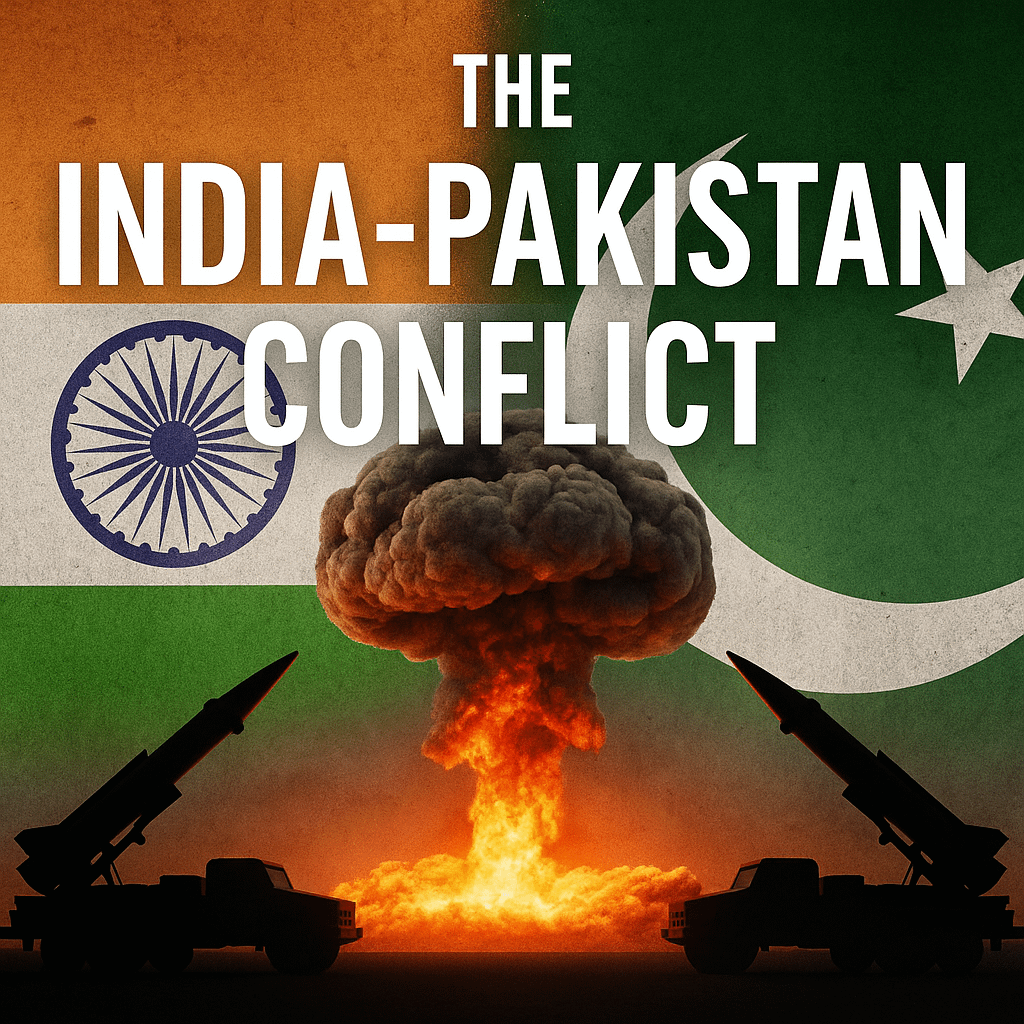Introduction
The India-Pakistan conflict remains one of the most complex and dangerous rivalries in the world. With historical roots stretching back to the partition of British India in 1947, this dispute has evolved into a multifaceted geopolitical struggle involving territorial claims, nationalism, religion, and nuclear weaponry. In 2025, the two nations face another wave of escalation amid rising violence in Kashmir and growing mistrust.
Historical Background
The roots of the India-Pakistan conflict lie in the partition of British India, which led to the creation of Pakistan as a Muslim-majority state and India as a secular democracy. The princely state of Jammu and Kashmir, a Muslim-majority region ruled by a Hindu maharaja, became the focal point of dispute after its accession to India in 1947. This led to the first of several wars between the two countries.
Key Conflicts:
- 1947–1948 War: Resulted in the division of Kashmir between India and Pakistan.
- 1965 War: A full-scale conflict over Kashmir.
- 1971 War: Centered around the creation of Bangladesh, formerly East Pakistan.
- 1999 Kargil War: A high-altitude conflict initiated by Pakistani forces in Indian-controlled Kashmir.
The Nuclear Dimension
Both India and Pakistan possess nuclear weapons, which has significantly raised the stakes in their confrontations. Since both countries conducted nuclear tests in 1998, the threat of nuclear conflict has hovered over South Asia.
Nuclear Capabilities:
- India: Estimated to have 160 nuclear warheads and a nuclear triad (land, air, sea).
- Pakistan: Estimated 165 nuclear warheads with a focus on tactical nuclear weapons.
Although both sides follow a doctrine of “minimum credible deterrence,” the presence of nuclear arms means that even limited conventional conflicts carry the risk of rapid escalation.
Recent Tensions in 2025
The year 2025 has seen a major spike in hostility between the two nations:
- Kashmir Attacks: An April 2025 attack in Pahalgam killed 26 Hindu pilgrims, escalating accusations and threats.
- Diplomatic Fallout: India expelled Pakistani diplomats and suspended the Indus Waters Treaty. Pakistan responded by banning Indian airspace and recalling its envoy.
- Military Movements: Pakistan warned of possible Indian strikes within 36 hours, while India increased its border presence.
Key Issues Driving the Conflict
1. The Kashmir Dispute
At the heart of the conflict is Kashmir — a region both countries claim in full but control in part. India maintains that Kashmir is an integral part of its territory, while Pakistan sees it as disputed land where the Muslim population should have the right to self-determination.
2. Religious Nationalism
In recent years, political movements in both countries have grown more nationalistic. India’s Hindu nationalist government and Pakistan’s Islamic political rhetoric fuel mutual distrust and polarization.
3. Cross-Border Terrorism
India accuses Pakistan of harboring and supporting militant groups that carry out attacks in Kashmir and other regions. Pakistan denies the allegations but criticizes India’s military presence in Kashmir.
International Response
The international community has expressed concern over the potential for escalation. The United States, United Nations, and United Kingdom have called for restraint, while China and Russia have offered to mediate. However, both India and Pakistan have historically resisted external mediation on Kashmir.
The Way Forward
Peace between India and Pakistan remains elusive, but not impossible. Confidence-building measures, dialogue, and people-to-people engagement are essential. The challenge lies in overcoming decades of mistrust, political opportunism, and competing national narratives.
Conclusion
The India-Pakistan conflict is a complex interplay of history, politics, and nuclear brinkmanship. In 2025, the stakes are higher than ever. Unless meaningful diplomatic efforts are made, the risk of escalation — even accidental — could have catastrophic consequences for South Asia and beyond.

